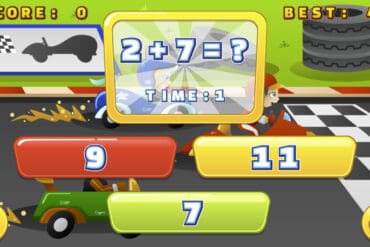Understanding the Australian Footwear Size Chart for Kids
Hey there, super parents! Are you on a mission to find the absolute cutest pair of shoes for your little munchkin, but feel bewildered by all the different size options out there? Worry not, because your guide to navigating the Australian Footwear Size Chart for your kiddos is here! We’ll help you decode sizes, convert measurements, and ensure those tiny toes are snug and secure in their stylish new kicks!
Why Finding the Right Size Matters
Before we dive into the nitty-gritty, let’s chat about why it’s crucial to get those sizes just right. First off, children’s feet are constantly growing and changing, which means that what fit them like a glove a month ago might have them squirming uncomfortably now. Ill-fitting shoes can lead to more than just irritability; they can cause blisters, hinder proper foot development, and even lead to posture problems. But don’t fret—we’re here to ensure that doesn’t happen!
Your Step-by-Step Measuring Guide
Let’s kick things off with a simple step-by-step guide on how to measure your child’s feet accurately:
- Get Ready: Have your child stand on a blank piece of paper wearing the socks they’d typically wear with shoes.
- Trace Away: Gently trace around the outline of both their feet with a pen or pencil, keeping it as close to their foot as possible.
- Measure: With a ruler, measure the distance from the heel to the tip of the longest toe—this gives you the foot length. Worry not about width for now—we’ll get to that.
- Round Up: Kids grow at the speed of light (or so it seems). Round up those measurements to the nearest millimeter for some growing room.
Decoding the Size Chart
Now that you’ve got those measurements, let’s match them up with the Australian footwear sizing:
We’d love to just point you to a single chart and have you be on your merry way, but truth be told, shoe sizes can vary slightly from brand to brand. However, fear not! We’ve simplified the process:
| AU Size | Foot length (mm) |
|---|---|
| 4 | 132 |
| 5 | 140 |
| 6 | 145 |
Note: The above chart provides a general guideline. It’s always best to check with the specific brand’s size chart if available.
Congratulations, armed with this guide, you’re all set to go forth and conquer the shoe world for your little ones! We’ve covered why the right size is essential, how to measure those feet properly, and interpreting the Australian footwear size chart. Remember, a comfortable child is a happy child—and a happy child makes for an even happier parent! Stay tuned for more details in our upcoming section.
But wait, there’s more! Our next section is going to dive even deeper, with tips on understanding shoe widths, how to adjust for wide or narrow feet, and the secrets to shoe shopping for the most dynamic of foot sizes—plus, we’ll even touch on the mysteries of half sizes and when to size up! Don’t miss out on these foot-savvy tips!

5 Essential Tips for Preparing to Use the Australian Footwear Size Chart for Kids
Alrighty, let’s dig into some golden nuggets of wisdom that you, as parents, should keep in your back pocket when prepping to use the Australian footwear size chart for your tykes:
- Understand the Importance of Regular Measuring: Your kiddo’s feet could be indulging in a growth spurt without you even realizing it! It’s a good practice to measure their feet every 2-3 months to ensure they haven’t outgrown their current size. Plus, it’s a fun way to see just how fast they’re growing!
- Learn About Shoe Widths: Not all feet are created equal, and some may be wider or narrower than others. Make sure to have your little one’s foot width checked if it’s offered, to avoid any unnecessary squishing or sliding inside those trendy new shoes.
- When to Shop: Opt for a shoe-shopping adventure later in the day—feet tend to swell slightly by then, so you’ll get a size that’s comfortable all day long. Plus, it could be the perfect after-nap activity for an energy-filled youngster!
- Don’t Skimp on Quality: Cheap shoes might be enticing, but they might not always offer the support and durability your active child needs. It’s worth investing a tad more for a shoe that can withstand the playground’s trials and tribulations.
- Beware of Hand-Me-Downs: While passing down shoes from one sibling to another can be economical, do so with caution. Shoes often mold to the original wearer’s feet, and a worn pattern might not suit the next little walker’s tootsies!
Adjusting for Different Foot Shapes and Sizes
Children’s feet come in an array of shapes and sizes—just like adult feet. Understanding how to adjust for these differences is crucial to finding the perfect fit!
- Wide Feet: Look for brands known for a wider fit or specific ‘wide’ sizing. Ensure there’s enough room in the toe box and nothing pinches!
- Narrow Feet: Seek out narrower styles or consider insoles to help fill the shoe out if needed. Adjustable straps or laces can also be a godsend for securing a narrow foot.
Armed with this knowledge, you can feel confident on your quest to find shoes that will not only fit well but also contribute to the healthy development of your child’s feet.
The Secret to Shoe Shopping for Dynamic Foot Sizes: Half Sizes and Sizing Up!
Ever come across a shoe that’s just a smidge too tight but the next size up is a boat on your child’s foot? Half sizes are your heroes here, bridging that tiny gap to achieve the perfect fit!
As for sizing up, while a bit of growing room is wise (usually about a thumb’s width from the toe), too much extra space can be just as harmful as too small. Walking in shoes that are too large can be cumbersome and lead to tripping. So, balance is key!
In conclusion, parents, remember that the right shoe size is more than a number—it’s about comfort, support, and preventing future foot problems. With this guide in your hand and a little bit of patience, you’ll find that Cinderella-perfect fit for your little one. And who knows, maybe shoe shopping will become one of your favorite bonding activities with your budding fashionistas!
For more great articles please see here. For more information see here
Disclaimer
The articles available via our website provide general information only and we strongly urge readers to exercise caution and conduct their own thorough research and fact-checking. The information presented should not be taken as absolute truth, and, to the maximum extent permitted by law, we will not be held liable for any inaccuracies or errors in the content. It is essential for individuals to independently verify and validate the information before making any decisions or taking any actions based on the articles.




